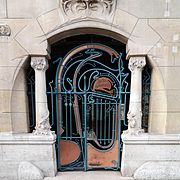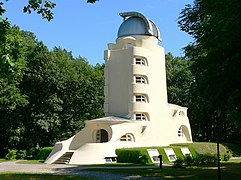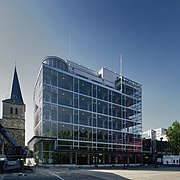Architecture
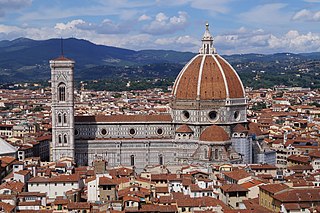
Architecture is the art and technique of designing and building, as distinguished from the skills associated with construction.
The practice, which began in the prehistoric era, has been used as a way of expressing culture by civilizations on all seven continents.[7] For this reason, architecture is considered to be a form of art. Texts on architecture have been written since ancient times. The earliest surviving text on architectural theories is the 1st century AD treatise De architectura by the Roman architect Vitruvius, according to whom a good building embodies firmitas, utilitas, and venustas (durability, utility, and beauty). Centuries later, Leon Battista Alberti developed his ideas further, seeing beauty as an objective quality of buildings to be found in their proportions. In the 19th century, Louis Sullivan declared that "form follows function". "Function" began to replace the classical "utility" and was understood to include not only practical but also aesthetic, psychological, and cultural dimensions. The idea of sustainable architecture was introduced in the late 20th century.
Architecture began as rural, oral
Modern architecture began after World War I as an avant-garde movement that sought to develop a completely new style appropriate for a new post-war social and economic order focused on meeting the needs of the middle and working classes. Emphasis was put on modern techniques, materials, and simplified geometric forms, paving the way for high-rise superstructures. Many architects became disillusioned with modernism which they perceived as ahistorical and anti-aesthetic, and postmodern and contemporary architecture developed. Over the years, the field of architectural construction has branched out to include everything from ship design to interior decorating.
Definitions
Architecture can mean:
- A general term to describe buildings and other physical structures.[8]
- The art and science of nonbuilding structures.[8]
- The style of design and method of construction of buildings and other physical structures.[8]
- A unifying or coherent form or structure.[9]
- Knowledge of art, science, technology, and humanity.[8]
- The design activity of the architect,[8] from the macro-level (urban design, landscape architecture) to the micro-level (construction details and furniture).
- The practice of the architect where architecture means offering or rendering professional services in connection with the design and construction of buildings or built environments.[10]
Theory

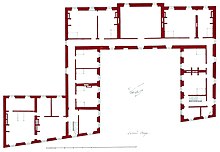
The philosophy of architecture is a branch of
Historic treatises
The earliest surviving written work on the subject of architecture is De architectura by the Roman architect Vitruvius in the early 1st century AD.[12] According to Vitruvius, a good building should satisfy the three principles of firmitas, utilitas, venustas,[13][14] commonly known by the original translation – firmness, commodity and delight. An equivalent in modern English would be:
- Durability – a building should stand up robustly and remain in good condition
- Utility – it should be suitable for the purposes for which it is used
- Beauty – it should be aesthetically pleasing
According to Vitruvius, the architect should strive to fulfill each of these three attributes as well as possible. Leon Battista Alberti, who elaborates on the ideas of Vitruvius in his treatise, De re aedificatoria, saw beauty primarily as a matter of proportion, although ornament also played a part. For Alberti, the rules of proportion were those that governed the idealized human figure, the Golden mean. The most important aspect of beauty was, therefore, an inherent part of an object, rather than something applied superficially, and was based on universal, recognizable truths. The notion of style in the arts was not developed until the 16th century, with the writing of Giorgio Vasari.[15] By the 18th century, his Lives of the Most Excellent Painters, Sculptors, and Architects had been translated into Italian, French, Spanish, and English.
In the 16th century, Italian Mannerist architect, painter and theorist Sebastiano Serlio wrote Tutte L'Opere D'Architettura et Prospetiva (Complete Works on Architecture and Perspective). This treatise exerted immense influence throughout Europe, being the first handbook that emphasized the practical rather than the theoretical aspects of architecture, and it was the first to catalog the five orders.[16]
In the early 19th century,
On the difference between the ideals of architecture and mere construction, the renowned 20th-century architect Le Corbusier wrote: "You employ stone, wood, and concrete, and with these materials you build houses and palaces: that is construction. Ingenuity is at work. But suddenly you touch my heart, you do me good. I am happy and I say: This is beautiful. That is Architecture".[19] Le Corbusier's contemporary Ludwig Mies van der Rohe is said to have stated in a 1959 interview that "architecture starts when you carefully put two bricks together. There it begins."[20]

Modern concepts
The notable 19th-century architect of skyscrapers, Louis Sullivan, promoted an overriding precept to architectural design: "Form follows function". While the notion that structural and aesthetic considerations should be entirely subject to functionality was met with both popularity and skepticism, it had the effect of introducing the concept of "function" in place of Vitruvius' "utility". "Function" came to be seen as encompassing all criteria of the use, perception and enjoyment of a building, not only practical but also aesthetic, psychological and cultural.
Nunzia Rondanini stated, "Through its aesthetic dimension architecture goes beyond the functional aspects that it has in common with other human sciences. Through its own particular way of expressing values, architecture can stimulate and influence social life without presuming that, in and of itself, it will promote social development.... To restrict the meaning of (architectural) formalism to art for art's sake is not only reactionary; it can also be a purposeless quest for perfection or originality which degrades form into a mere instrumentality".[21]
Among the philosophies that have influenced modern architects and their approach to building design are
In the late 20th century a new concept was added to those included in the compass of both structure and function, the consideration of sustainability, hence sustainable architecture. To satisfy the contemporary ethos a building should be constructed in a manner which is environmentally friendly in terms of the production of its materials, its impact upon the natural and built environment of its surrounding area and the demands that it makes upon the natural environment for heating, ventilation and cooling, water use, waste products and lighting.
History
Origins and vernacular architecture
Building first evolved out of the dynamics between needs (e.g. shelter, security, and worship) and means (available building materials and attendant skills). As human cultures developed and knowledge began to be formalized through oral traditions and practices, building became a craft, and architecture became the term used to describe the highly formalized and respected aspects of the craft. It is widely assumed that architectural success was achieved through trial and error, with progressively less trial and more replication as results became satisfactory over time. Vernacular architecture continues to be produced in many parts of the world.
Prehistoric architecture
-
Göbekli Tepe from Turkey, founded in 10th millennium BC and abandoned in 8th millennium BC
-
Goseck circle, Germany4900 BC
-
Miniature of a regular Cucuteni-Trypillian house, full of ceramic vessels
-
Excavated dwellings at Skara Brae (Orkney, Scotland)
Early human settlements were mostly
Neolithic archaeological sites include Göbekli Tepe and Çatalhöyük in Turkey, Jericho in the Levant, Mehrgarh in Pakistan, Skara Brae in Orkney, and Cucuteni-Trypillian culture settlements in Romania, Moldova and Ukraine.
Classical era
-
Mesopotamian architecture: Reconstruction of the Ishtar Gate in the Pergamon Museum (Berlin, Germany), c. 575 BC
-
Ancient Greek architecture: The Parthenon on the Acropolis of Athens, made of marble and limestone, c. 460–406 BC
-
Maison Carrée from Nîmes(France), one of the best-preserved Roman temples, c. 2 AD
In many ancient civilizations such as those of
The architecture and urbanism of classical civilizations such as the Greek and Roman civilizations evolved from civic ideals rather than religious or empirical ones. New building types emerged and architectural style developed in the form of the classical orders. Roman architecture was influenced by Greek architecture as they incorporated many Greek elements into their building practices.[22]
Texts on architecture have been written since ancient times—these texts provided both general advice and specific formal prescriptions or canons. Some examples of canons are found in the writings of Vitruvius in the 1st century BC. Some of the most important early examples of canonic architecture are religious.
Asian architecture
-
), c. 1030
-
Chinese architecture: The Hall of Prayer for Good Harvests, the main building of the Temple of Heaven (Beijing, China), 1703–1790
Asian architecture developed differently compared to Europe, and the Buddhist, Hindu and Sikh architectural styles have different characteristics. Unlike Indian and Chinese architecture, which had great influence on the surrounding regions, Japanese architecture did not. Some Asian architecture showed great regional diversity, in particular Buddhist architecture. Moreover, other architectural achievements in Asia is the Hindu temple architecture, which developed from around the 5th century CE, is in theory governed by concepts laid down in the Shastras, and is concerned with expressing the macrocosm and the microcosm.
In many Asian countries, pantheistic religion led to architectural forms that were designed specifically to enhance the natural landscape. Also, the grandest houses were relatively lightweight structures mainly using wood until recent times, and there are few survivals of great age. Buddhism was associated with a move to stone and brick religious structures, probably beginning as rock-cut architecture, which has often survived very well.
Early Asian writings on architecture include the Kao Gong Ji of China from the 7th–5th centuries BC; the Shilpa Shastras of ancient India; Manjusri Vasthu Vidya Sastra of Sri Lanka and Araniko of Nepal .
Islamic architecture
-
)
Islamic architecture began in the 7th century, incorporating architectural forms from the ancient Middle East and Byzantium, but also developing features to suit the religious and social needs of the society. Examples can be found throughout the Middle East, Turkey, North Africa, the Indian Sub-continent and in parts of Europe, such as Spain, Albania, and the Balkan States, as the result of the expansion of the Ottoman Empire. [23][24]
European medieval architecture
-
Armenian Architecture: Interior of Etchmiadzin Cathedral, the first cathedral in the world, founded 303 year AD.
-
Byzantine architecture: Apse of Santa Maria Maggiore (Rome), decorated in the 5th century with this glamorous mosaic
-
Gothic architecture: Stained glass windows of the Sainte-Chapelle in Paris, completed in 1248, mostly constructed between 1194 and 1220
In
The major architectural undertakings were the buildings of abbeys and cathedrals. From about 900 onward, the movements of both clerics and tradesmen carried architectural knowledge across Europe, resulting in the pan-European styles Romanesque and Gothic.
Also, a significant part of the Middle Ages architectural heritage is numerous
Renaissance architecture
-
The Florence Cathedral (Florence, Italy), 1294–1436, by Arnolfo di Cambio, Filippo Brunelleschi and Emilio De Fabris
-
The Tempietto (Rome), by Donato Bramante, 1444–1514
-
The Hall of Perspective from Villa Farnesina (Rome), by Baldassare Peruzzi, 1505–1510
-
The
-
The Château de Chenonceau (France), by Philibert de l'Orme, 1576
In
A revival of the Classical style in architecture was accompanied by a burgeoning of science and engineering, which affected the proportions and structure of buildings. At this stage, it was still possible for an artist to design a bridge as the level of structural calculations involved was within the scope of the generalist.
Early modern and the industrial age
-
Versailles, France)
-
Neoclassical architecture: The west facade of the Petit Trianon (Versailles), 1764, by Ange-Jacques Gabriel
-
Gothic Revival): Interior of the All Saints (London), 1850–1859, by William Butterfield
-
19th century Eclectic Classicist architecture: The Museum of Ages on Victory Avenue (Bucharest, Romania), late 19th century, unknown architect
-
19th century industrial architecture: Les Halles (Paris), 1850s-destroyed in 1971, by Victor Baltard
-
Orientalist architecture: The Éden-Théâtre (Paris), early 1880s – demolished in 1895, by William Klein and Albert Duclos
-
Revivalist architecture of a national style (in this case Romanian Revival): The C.N. Câmpeanu House on Bulevardul Dacia (Bucharest), c. 1923, by Constantin Nănescu[25]
-
Beaux-Arts architecture: The CEC Palace on Victory Avenue (Bucharest), 8 June 1897 – 1900, by Paul Gottereau[26]
The emerging knowledge in scientific fields and the rise of new materials and technology, architecture and
Meanwhile, the Industrial Revolution laid open the door for mass production and consumption. Aesthetics became a criterion for the middle class as ornamented products, once within the province of expensive craftsmanship, became cheaper under machine production.
Vernacular architecture became increasingly ornamental. Housebuilders could use current architectural design in their work by combining features found in pattern books and architectural journals.
Modernism
-
Expressionist architecture: The Einstein Tower (Potsdam, near Berlin, Germany), 1919–1922, by Erich Mendelsohn
-
International Style: The Glaspaleis (Heerlen, the Netherlands), 1934–1935, by Frits Peutz and Philip Johnson
Around the beginning of the 20th century, general dissatisfaction with the emphasis on revivalist architecture and elaborate decoration gave rise to many new lines of thought that served as precursors to Modern architecture. Notable among these is the Deutscher Werkbund, formed in 1907 to produce better quality machine-made objects. The rise of the profession of industrial design is usually placed here. Following this lead, the Bauhaus school, founded in Weimar, Germany in 1919, redefined the architectural bounds prior set throughout history, viewing the creation of a building as the ultimate synthesis – the apex – of art, craft, and technology.
When modern architecture was first practiced, it was an avant-garde movement with moral, philosophical, and aesthetic underpinnings. Immediately after World War I, pioneering modernist architects sought to develop a completely new style appropriate for a new post-war social and economic order, focused on meeting the needs of the middle and working classes. They rejected the architectural practice of the academic refinement of historical styles which served the rapidly declining aristocratic order. The approach of the Modernist architects was to reduce buildings to pure forms, removing historical references and ornament in favor of functional details. Buildings displayed their functional and structural elements, exposing steel beams and concrete surfaces instead of hiding them behind decorative forms. Architects such as Frank Lloyd Wright developed organic architecture, in which the form was defined by its environment and purpose, with an aim to promote harmony between human habitation and the natural world with prime examples being Robie House and Fallingwater.
Architects such as
Postmodernism
-
Team Disney Building (Los Angeles, US), 1990, by Michael Graves
-
Multicolour interior of the Cambridge Judge Business School (Cambridge, the UK), 1995, by John Outram
Many architects resisted
One such reaction to the cold aesthetic of modernism and Brutalism is the school of metaphoric architecture, which includes such things as bio morphism and zoomorphic architecture, both using nature as the primary source of inspiration and design. While it is considered by some to be merely an aspect of postmodernism, others consider it to be a school in its own right and a later development of expressionist architecture.[27]
Beginning in the late 1950s and 1960s,
Architecture today
-
The Isbjerget housing project (Aarhus, Denmark), inspired by form and color of icebergs, 2013, by CEBRA, JDS Architects, Louis Paillard, and SeARCH
Since the 1980s, as the complexity of buildings began to increase (in terms of structural systems, services, energy and technologies), the field of architecture became multi-disciplinary with specializations for each project type, technological expertise or project delivery methods. Moreover, there has been an increased separation of the 'design' architect[Notes 1] from the 'project' architect who ensures that the project meets the required standards and deals with matters of liability.[Notes 2] The preparatory processes for the design of any large building have become increasingly complicated, and require preliminary studies of such matters as durability, sustainability, quality, money, and compliance with local laws. A large structure can no longer be the design of one person but must be the work of many. Modernism and Postmodernism have been criticized by some members of the architectural profession who feel that successful architecture is not a personal, philosophical, or aesthetic pursuit by individualists; rather it has to consider everyday needs of people and use technology to create livable environments, with the design process being informed by studies of behavioral, environmental, and social sciences.
Environmental
Concurrently, the recent movements of
Types
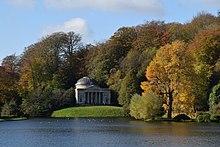
Residential architecture
Residential architecture is the design of functional fits the user's lifestyle while adhering to the building codes and zoning laws.
Commercial architecture
Commercial architecture is the design of commercial buildings that serves the needs of businesses, the government and religious institutions.[36]
Industrial architecture
Industrial architecture is the design of specialized industrial buildings whose primary focus is designing buildings that are can fulfill its function while ensuring the safe movement of labor and goods in the facility.
Landscape architecture
Landscape architecture is the design of outdoor public areas, landmarks, and structures to achieve environmental, social-behavioral, or aesthetic outcomes.
Interior architecture

Interior architecture is the design of a space which has been created by structural boundaries and the human interaction within these boundaries. It can also be the initial design and plan for use, then later redesigned to accommodate a changed purpose, or a significantly revised design for adaptive reuse of the building shell.[38] The latter is often part of sustainable architecture practices, conserving resources through "recycling" a structure by adaptive redesign. Generally referred to as the spatial art of environmental design, form and practice, interior architecture is the process through which the interiors of buildings are designed, concerned with all aspects of the human uses of structural spaces.
Urban design
Urban design is the process of designing and shaping the physical features of cities, towns, and villages. In contrast to architecture, which focuses on the design of individual buildings, urban design deals with the larger scale of groups of buildings, streets and public spaces, whole neighborhoods and districts, and entire cities, with the goal of making urban areas functional, attractive, and sustainable.[39]
Urban design is an interdisciplinary field that uses elements of many built environment professions, including
Other types of architecture

Naval architecture, also known as naval engineering, is an
Metaphorical "architectures"
"Architecture" is used as a metaphor for many modern techniques or fields for structuring abstractions. These include:
- covering more specific aspects.
- Business architecture, defined as "a blueprint of the enterprise that provides a common understanding of the organization and is used to align strategic objectives and tactical demands",[43] Enterprise architecture is another term.
- human mind
Seismic architecture
The term '
See also
- Architectural engineering
- Architectural technology
- Ephemeral architecture
- Index of architecture articles
- Outline of architecture
- Philosophy of architecture
- Reverse architecture
- Timeline of architecture
Notes
- ^ A design architect is one who is responsible for the design.
- ^ A project architect is one who is responsible for ensuring the design is built correctly and who administers building contracts – in non-specialist architectural practices the project architect is also the design architect and the term refers to the differing roles the architect plays at differing stages of the process.
References
- ^ Museo Galileo, Museum and Institute of History and Science, The Dome of Santa Maria del Fiore Archived 1 April 2013 at the Wayback Machine, (accessed 30 January 2013)
- ^ Giovanni Fanelli, Brunelleschi, Becocci, Florence (1980), Chapter: The Dome pp. 10–41.
- ^ "architecture – Expression of technique". Britannica. Retrieved 21 September 2022.
- from the original on 18 April 2023 – via ResearchGate.
- ^ "architecture". Encyclopedia Britannica. Archived from the original on 16 November 2017. Retrieved 27 October 2017.
- ISBN 978-9990985085.
- ^ "7 Things I Learned About "Home" from Talking to Architects on Every Continent". Apartment Therapy. Archived from the original on 8 November 2020. Retrieved 5 December 2020.
- ^ ISBN 0198605757
- ISBN 978-0-87779-132-4
- ^ "Gov.ns.ca". Gov.ns.ca. Archived from the original on 21 July 2011. Retrieved 2 July 2011.
- ^ Deleuze, Gilles (1990). Pourparlers. Paris: Minuit. p. 219.
It is not the line that is between two points, but the point that is at the intersection of several lines.
- ISBN 0-521-00292-3
- ^ "Vitruvius Ten Books on Architecture, with regard to landscape and garden design". gardenvisit.com. Archived from the original on 12 October 2007. Retrieved 14 November 2005.
- ^ "Vitruvius". Penelope.uchicago.edu. Archived from the original on 30 July 2022. Retrieved 2 July 2011.
- ^ Françoise Choay, Alberti and Vitruvius, editor, Joseph Rykwert, Profile 21, Architectural Design, Vol. 49 No. 5–6
- ^ Sebastiano Serlio – On domestic architecture Archived 16 April 2021 at the Wayback Machine, Columbia University Libraries, accessed February 5, 2021
- S2CID 110313708.
- ^ ISBN 0-486-26145-X
- ISBN 0-486-25023-7
- ^ Verney, Harriet (25 July 2017). "9 innovative contemporary buildings that test the limits of humble brick". CNN. Archived from the original on 29 May 2023. Retrieved 29 May 2023.
- ^ Rondanini, Nunzia Architecture and Social Change Heresies II, Vol. 3, No. 3, New York, Neresies Collective Inc., 1981.
- ^ "Introduction to Greek architecture". Khan Academy. Archived from the original on 14 October 2014. Retrieved 23 June 2017.
- ^ Marika Sardar (October 2004). "Essay: The Later Ottomans and the Impact of Europe". www.metmuseum.org. The Met. Archived from the original on 13 February 2019. Retrieved 12 February 2019.
- ISBN 978-9004290365. Archived from the original on 13 February 2019. Retrieved 12 February 2019.)
{{cite book}}:|website=ignored (help - ISBN 978-973-1872-30-8.
- ISBN 978-606-8839-09-7.
- ^
Fez-Barringten, Barie (2012). Architecture: The Making of Metaphors. Newcastle upon Tyne: Cambridge Scholars Publishing. ISBN 978-1-4438-3517-6.
- ISBN 978-0816666041. Archivedfrom the original on 19 March 2022. Retrieved 30 July 2022.
- ^ Venturi, Robert (1966). Complexity and Contradiction in Architecture. New York: Museum of Modern Art.
complexity and contradiction in architecture.
- ^ OneWorld.net (31 March 2004). "Vernacular Architecture in India". El.doccentre.info. Archived from the original on 3 March 2021. Retrieved 2 July 2011.
- ^ Other energy efficiency and green building rating systems include Energy Star, Green Globes, and CHPS (Collaborative for High Performance Schools).
- ^ "The Charter of the New Urbanism". cnu.org. 20 April 2015. Archived from the original on 29 June 2015. Retrieved 23 March 2014.
- ^ "Beauty, Humanism, Continuity between Past and Future". Traditional Architecture Group. Archived from the original on 5 March 2018. Retrieved 23 March 2014.
- ^ Issue Brief: Smart-Growth: Building Livable Communities Archived 19 November 2018 at the Wayback Machine. American Institute of Architects. Retrieved on 23 March 2014.
- ^ "Architecture". Litcaf. 10 February 2016. Archived from the original on 19 November 2018. Retrieved 4 June 2017.
- ^ Scott Zurn. (2023, May 16). Types of commercial architecture & how to find success. Level Engineering & Inspection. https://www.levelengineering.com/architecture/commercial-architecture/
- ISBN 978-0500274316
- ^ "Interior Architecture". RISD Interior Architecture Graduate Department. Archived from the original on 30 July 2022. Retrieved 28 February 2017.
- from the original on 4 July 2019. Retrieved 15 April 2015.
- ^ Van Assche, K., Beunen, R., Duineveld, M., & de Jong, H. (2013). "Co-evolutions of planning and design: Risks and benefits of design perspectives in planning systems" Archived 28 June 2013 at the Wayback Machine. Planning Theory, 12(2), 177–198.
- ^ RINA. "Careers in Naval Architecture". www.rina.org.uk. Archived from the original on 20 October 2017. Retrieved 26 February 2017.
- ISBN 0-7506-4988-7
- ^ OMG Business Architecture Special Interest Group "What Is Business Architecture? Archived 13 July 2017 at the Wayback Machine" at bawg.omg.org, 2008 (archive.org). Accessed 2015-04-03; Cited in: William M. Ulrich, Philip Newcomb Information Systems Transformation: Architecture-Driven Modernization Case Studies. (2010), p. 4.
- ^ Hannu Jaakkola and Bernhard Thalheim. (2011) "Architecture-driven modelling methodologies." In: Proceedings of the 2011 conference on Information Modelling and Knowledge Bases XXII. Anneli Heimbürger et al. (eds). IOS Press. p. 98
- ^ Reitherman, Robert (1985). Earthquake Engineering and Earthquake Architecture. Part of the AIA Workshop for Architects and Related Building Professionals on Designing for Earthquakes in the Western Mountain States.
- ISBN 978-9940979409.
- ^ Charleson, Andrew (2000). Towards An Earthquake Architecture. 12th World Conference on Earthquake Engineering.
External links
- World Architecture Community
- Architecture.com, published by Royal Institute of British Architects
- Architectural centers and museums in the world, list of links from the UIA
- American Institute of Architects
- Glossary of Architectural Terms Archived 28 August 2021 at the Wayback Machine
- Cities and Buildings Database – Collection of digitized images of buildings and cities drawn from across time and throughout the world from the University of Washington Library
- "Architecture and Power", BBC Radio 4 discussion with Adrian Tinniswood, Gillian Darley and Gavin Stamp (In Our Time, Oct. 31, 2002)






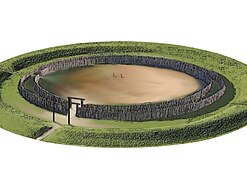
















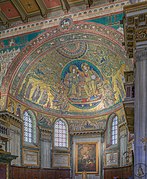















![Revivalist architecture of a national style (in this case Romanian Revival): The C.N. Câmpeanu House on Bulevardul Dacia (Bucharest), c. 1923, by Constantin Nănescu[25]](http://upload.wikimedia.org/wikipedia/commons/thumb/8/8e/56%2C_Bulevardul_Dacia%2C_Bucharest_%28Romania%29.jpg/247px-56%2C_Bulevardul_Dacia%2C_Bucharest_%28Romania%29.jpg)
![Beaux-Arts architecture: The CEC Palace on Victory Avenue (Bucharest), 8 June 1897 – 1900, by Paul Gottereau[26]](http://upload.wikimedia.org/wikipedia/commons/thumb/2/2b/Palacio_CEC%2C_Bucarest%2C_Ruman%C3%ADa%2C_2016-05-29%2C_DD_91-93_HDR.jpg/313px-Palacio_CEC%2C_Bucarest%2C_Ruman%C3%ADa%2C_2016-05-29%2C_DD_91-93_HDR.jpg)
